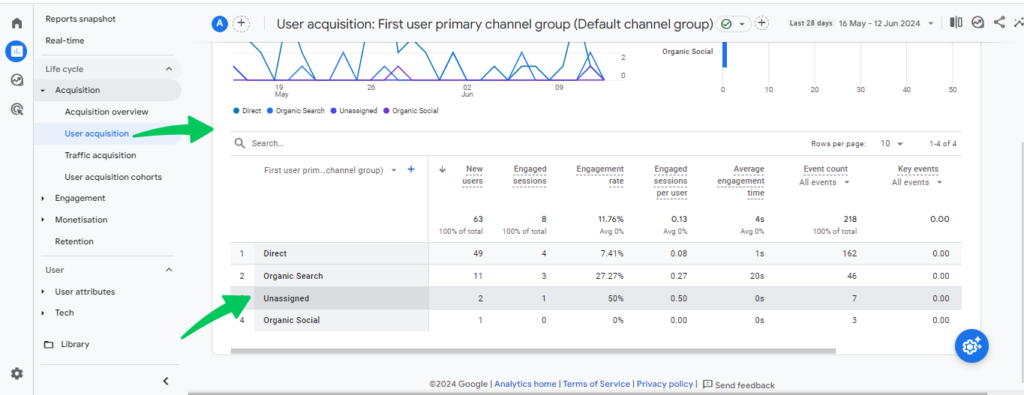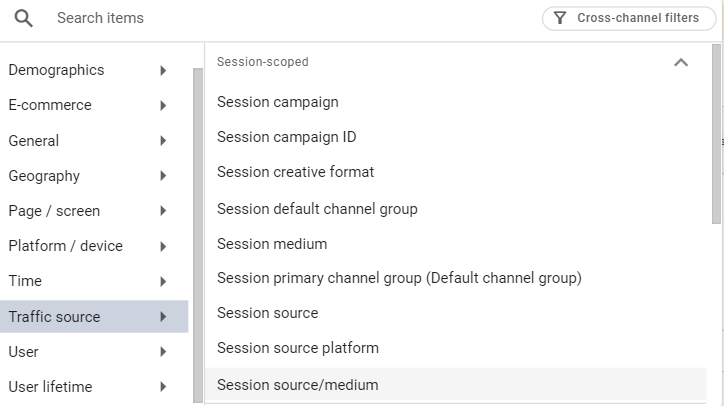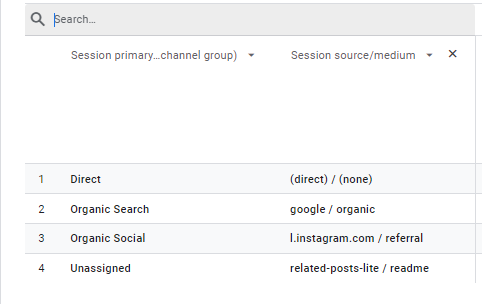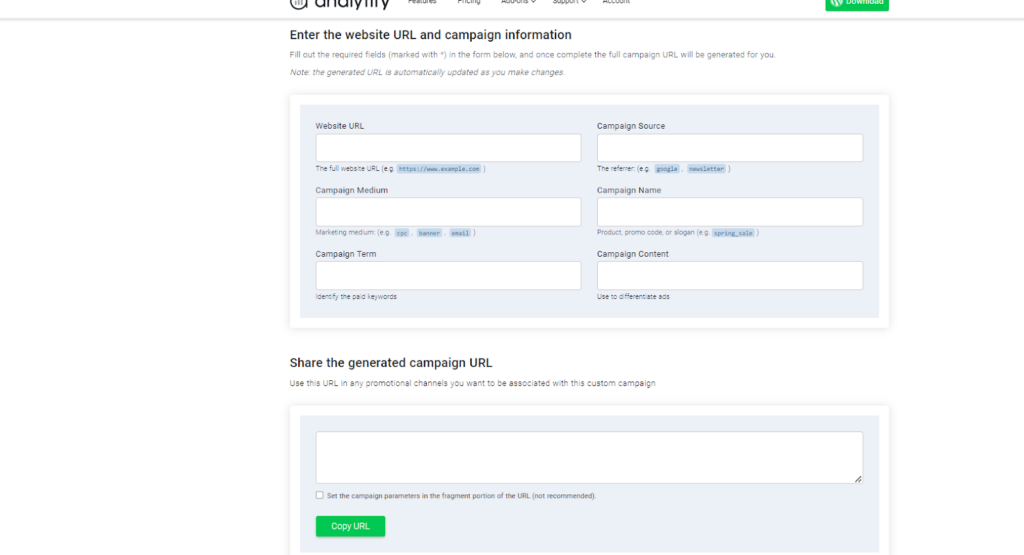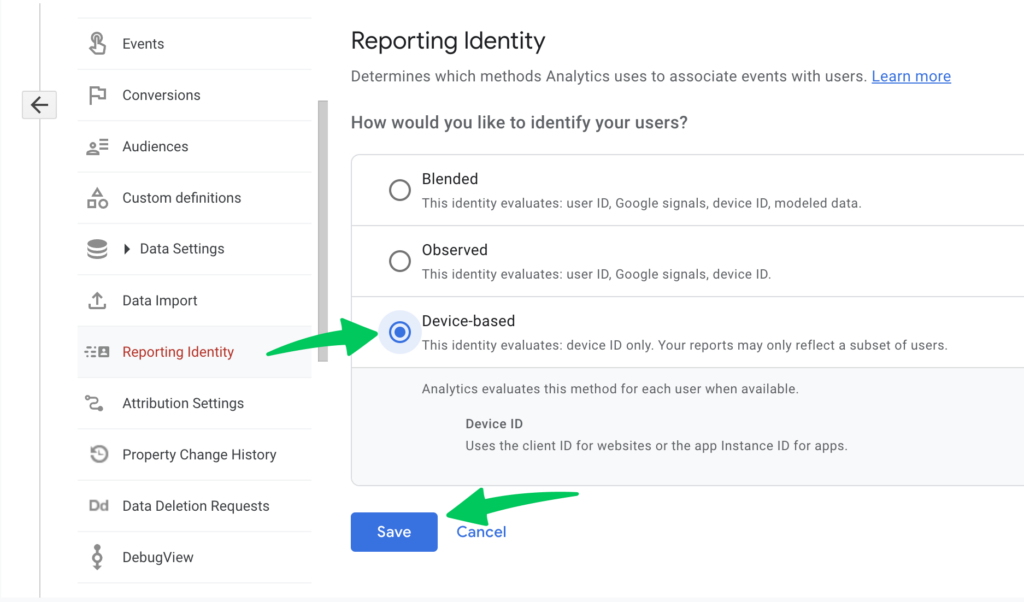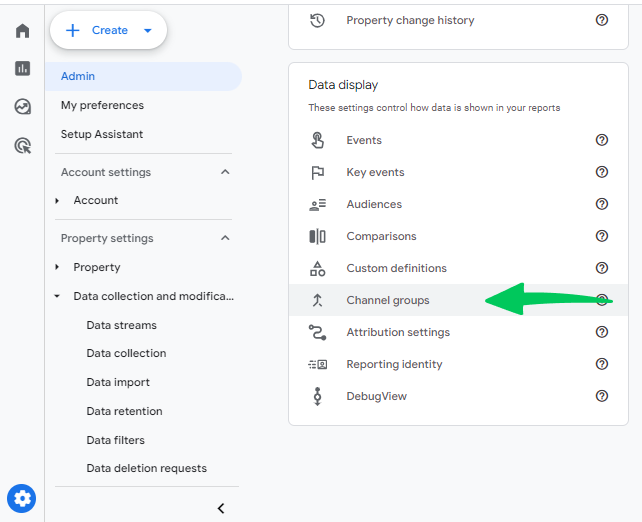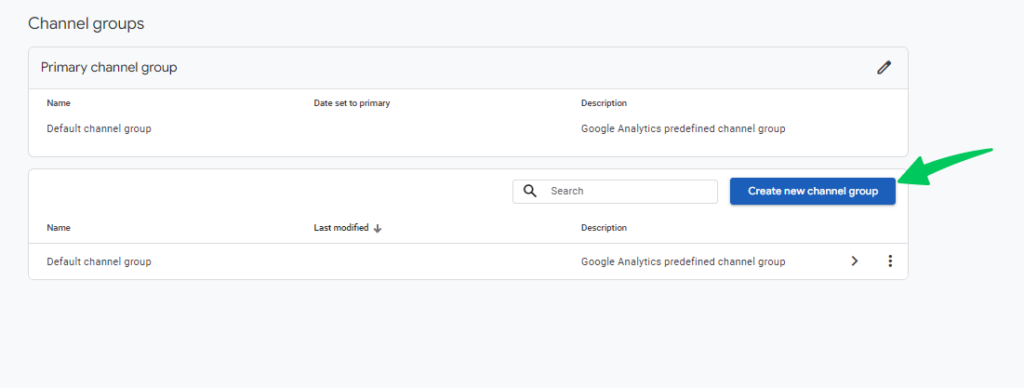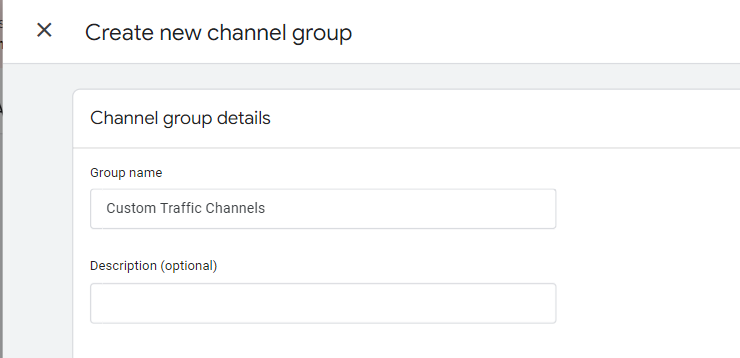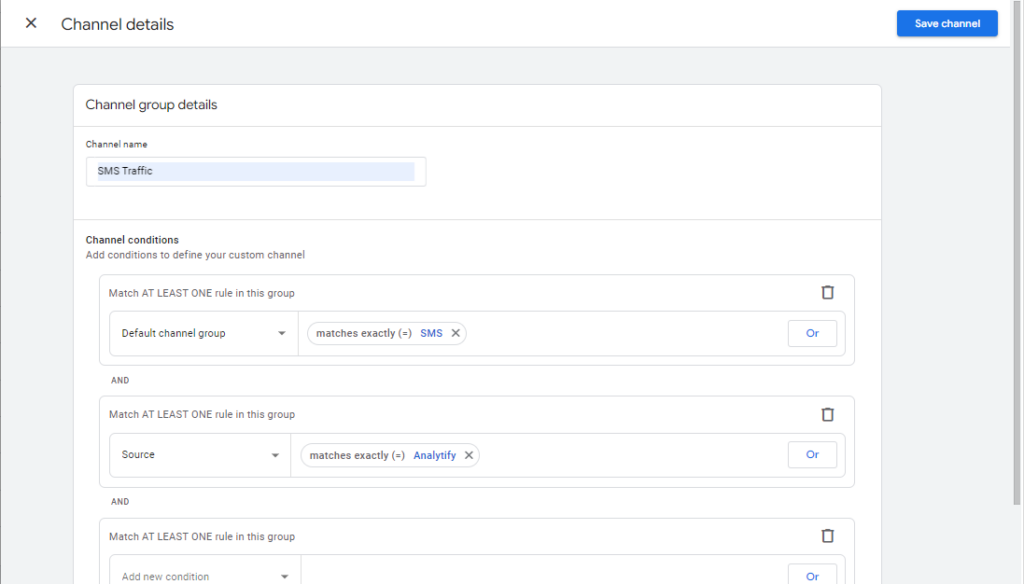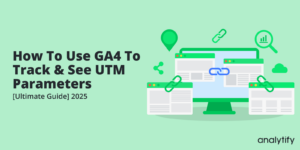
How to Fix Unassigned Traffic in Google Analytics 4
Have you ever noticed unassigned traffic in Google Analytics 4 (GA4) when you checked your dashboard? You’re not alone. Understanding GA4 unassigned traffic greatly affects how you see your website’s data and make decisions.
In this guide, we’ll break down everything about unassigned traffic in Google Analytics 4.
Whether you’re new to this or have some experience, you’ll find useful tips here. We’ll explain what is unassigned traffic in Google Analytics 4, why it shows up, and how to fix it.
Knowing how to handle unassigned traffic helps make sure your analytics are accurate.
So, let’s get started.
GA4 Unassigned Traffic (TOC):
What is Unassigned Traffic in Google Analytics 4?
In Google Analytics 4 (GA4), unassigned traffic refers to any visitor data that doesn’t fit into the default channel groups, such as Direct, Organic Search, Social, Email, Affiliates, referral traffic, etc.
This sounds complex, but it’s basically about traffic that GA4 can’t figure out where to put. It’s like having guests at a party who don’t have a name tag.
Why does this happen? Sometimes, the GA4 settings aren’t set up perfectly, or there might be technical issues. This means Google Analytics 4 can’t tell where the traffic came from, like social media, direct links, or organic search.
How does this affect you? If a lot of your traffic is unassigned, you’re missing out on knowing exactly how users find your site. This can make it hard to decide where to spend your marketing money or how to target your audience better.
Let’s see what unassigned traffic in Google Analytics 4 looks like:
How to View Unassigned Traffic in GA4
Viewing unassigned traffic in GA4 is straightforward once you know where to look. Here’s a step-by-step guide to help you find this elusive data.
- Open your GA4 Dashboard: Log into your Google Analytics account and select the GA4 property you’re working with.
- Go to Reports: On the left sidebar, click on Reports to access the different reporting options.
- Navigate to Acquisition Reports: Here, you’ll find information about where your traffic comes from.
First, go to the Acquisition Overview report and find the unassigned traffic in GA4.

- Check the Default Channel Grouping: In the Acquisition reports, look for a category called ‘Default Channel Grouping.’ This is where traffic is usually sorted by type, like organic search, social media, etc.
5. Check Traffic Acquisition Report: You can check the details of Unassigned Traffic in GA4 by navigating to the Traffic Acquisition report as shown in the below screenshot:
Next, you can find Google Analytics 4 unassigned traffic in the User acquisition report as shown in the below screenshot:
By checking where unassigned traffic appears, you can start to understand how much of your data is incomplete. It gives you a clue about the health of your tracking setup and what might need fixing.
Find Out What Kind of Traffic is Displayed as Unassigned
To fix unassigned traffic in GA4, it’s crucial first to understand why it’s showing up. Here’s how to dig deeper into the causes:
Investigate the Traffic Sources
- Navigate to the Right Report:
Open Google Analytics 4 and go to Reports >> Acquisition >> Traffic Acquisition.
- Understand the Default Display:
The primary dimension listed in this report is usually the Default Channel Group. Here, you can check how traffic is categorized.
- Locate Unassigned Traffic:
Look for the Unassigned label within the Default Channel Group.
To get more specific, click the Plus icon in the table.
Then, add the Session Source/Medium dimension.
This step will help you understand where this unassigned traffic originates.
Above the table, use the search field to enter Unassigned and press Enter. It filters the table to show only the Source/Medium values categorized as Unassigned.
By following these steps, you’ll be able to identify the types of traffic that GA4 hasn’t assigned to a specific source or medium. Next, we’ll explore the reasons behind this and discuss possible solutions to ensure your traffic is accurately categorized.
What are the Causes of Unassigned Traffic in GA4?
Understanding the causes of unassigned traffic in Google Analytics 4 can help you tackle the issue more effectively. Here’s a breakdown of common reasons why traffic might end up unassigned:
- Improper Tagging: If the tracking tags are not correctly implemented on all pages, some sessions may not be captured accurately.
- Configuration Issues: Mistakes in the setup of your GA4 property, like missing or incorrect configuration of source and medium parameters, can lead to unassigned traffic.
- Missing Referral Exclusions: Without proper referral exclusions, traffic from known sources might be misclassified as unassigned.
- Using URL Shorteners: Sometimes, when URL shorteners are used excessively, the tracking parameters might get stripped away, causing the source of traffic to be unassigned.
- Server Redirects: If redirects are not properly configured to carry over tracking information, traffic can lose its original source information.
- Ad Blockers: Users with ad blockers may prevent GA tags from firing, leading to sessions that are not tracked and thus appear as unassigned.
- Cross-Domain Tracking Issues: If you have multiple domains and haven’t set up cross-domain tracking correctly, visitors moving between sites might show as unassigned.
- Bot Traffic: Non-human traffic from bots that do not execute JavaScript or GA tracking codes.
- Tracking Code Errors: Errors in the GA4 tracking code, such as typos or outdated code versions.
- Cookie Consent Settings: Visitors rejecting or not consenting to cookies, which prevents tracking.
- Dynamic IP Addressing: Changes in IP addresses during a session can sometimes disrupt tracking.
- Incorrect Tag Sequencing: Tags that fire in the wrong order or too late in the page load, missing the tracking window.
Table Summarizing Causes of Unassigned Traffic:
| Cause | Description | Impact | Frequency |
| Improper Tagging | Tags not correctly implemented on all pages | Incomplete session capture | High |
| Configuration Issues | Incorrect setup of source and medium parameters in GA4 | Misclassification of traffic | Moderate |
| Missing Referral Exclusions | Known sources not properly excluded, leading to misclassification | Unassigned traffic from referrals | Moderate |
| Using URL Shorteners | Tracking parameters stripped away by URL shorteners | Loss of source information | Moderate to Low |
| Server Redirects | Redirects not maintaining tracking information | Loss of original source information | High |
| Ad Blockers | GA tags blocked, preventing sessions from being tracked | Untracked sessions leading to unassigned traffic | High |
| Cross-Domain Tracking Issues | Incorrect setup for tracking visitors across multiple domains | Sessions from visitors moving between domains appear as unassigned | Moderate to High |
| Bot Traffic | Non-human traffic not executing JavaScript or GA tracking codes | Skewed analytics data | Moderate |
| Tracking Code Errors | Errors in the tracking code, like typos or outdated versions | Incorrect data collection | Moderate |
| Cookie Consent Settings | Visitors not consenting to cookies, which prevents tracking | Loss of data on user interactions | Variable |
| Dynamic IP Addressing | IP address changes during a session can disrupt tracking | Session fragmentation | Low |
| Incorrect Tag Sequencing | Tags that fire in the wrong order or too late, missing the initial user interaction | Missing or incomplete data capture | Moderate |
Understanding and addressing these causes will help you refine your tracking setup and reduce the amount of unassigned traffic in your GA4 reports.
Understanding these causes will allow you to identify gaps in your tracking setup and guide you toward resolving them.
How to Fix Unassigned Traffic in GA4
Now that we understand the causes let’s focus on how to fix unassigned traffic in GA4. Here are detailed steps and strategies to ensure your traffic data is correctly categorized:
1. Correct Tagging and Configuration
Ensuring that your website is appropriately tagged and your GA4 configurations are correctly set up is crucial for accurate data collection and analysis. Here’s a step-by-step guide to help you correct tagging and configuration issues in GA4.
Step 1: Verify Tag Implementation Across All Pages
- Check Each Page: Make sure that the GA4 tracking code or Google Tag Manager (GTM) container snippet is present on every page of your website. Use a tool like Google Tag Assistant or a browser extension to crawl your site and identify any pages missing the tracking code.
- Consistent Tag Version: Confirm that you are using the latest version of the GA4 tag on all pages. Outdated tags can lead to incomplete or incorrect data collection.
Step 2: Use Analytify to Implement Google Tags
Use Analytify, the best Google Analytics WordPress plugin, to integrate your website smoothly with GA4. It will take care of tags automatically, so you won’t need to add tags manually.
Join 50,000+ Beginners & Professionals who use Analytify to Simplify their Google Analytics!
2. Configure UTM Source and Medium Correctly
- Standardize UTM Parameters: Use consistent UTM parameters across all marketing campaigns to ensure the source and medium are recognized.
- Understand Google’s UTM Parameter Rules
- Google Analytics relies on specific UTM parameters to categorize traffic correctly. The essential UTM parameters are:
- utm_source: Identifies the source of the traffic (e.g., google, newsletter).
- utm_medium: Identifies the medium (e.g., cpc, email).
- utm_campaign: Identifies the campaign name (e.g., summer_sale).
- Google Analytics relies on specific UTM parameters to categorize traffic correctly. The essential UTM parameters are:
- Review and Standardize UTM Parameters
- Ensure that all your marketing efforts consistently use UTM parameters. Follow these rules to avoid unassigned traffic:
- Use clear and consistent names for utm_source and utm_medium.
- Avoid spaces and special characters. Use underscores or hyphens instead.
- Ensure that utm_campaign names are descriptive and unique for each campaign.
- Ensure that all your marketing efforts consistently use UTM parameters. Follow these rules to avoid unassigned traffic:
- Apply UTM Parameters Correctly
- Update all URLs in your marketing materials to include properly formatted UTM parameters. For example:
Example for an email campaign:
https://yourwebsite.com?utm_source=newsletter&utm_medium=email&utm_campaign=spring_sale
Audit and Update Settings: Regularly audit your traffic sources and update GA4 settings to reflect new sources or changes in existing ones.
You can use our UTM campaign URL builder as shown below:
Use Analytify to manage and track UTM parameters.
3. By Implementing Cross-Domain Tracking
Set Up Cross-Domain Tracking: If you operate multiple domains, ensure that cross-domain tracking is set up correctly so that sessions aren’t lost when users move between sites.
Read our guide on How to Set up Cross Domain Tracking.
4. Handle Redirects and Referrals Properly
Fix Redirects: Ensure that any redirects on your site preserve the tracking parameters. This might involve updating how your redirects are handled server-side.
Adjust Referral Exclusions: Review and adjust your referral exclusion settings in GA4 to ensure legitimate traffic isn’t excluded or mislabeled.
5. Address Ad Blocker Issues
Monitor Ad Blocker Impact: Monitor how often ad blockers affect your data. Consider implementing strategies to encourage users to disable them, such as showing a message explaining how they impact user experience on your site.
6. Unassigned Traffic Not Set
For traffic labeled as ‘not set’, further, investigate the reasons often related to cookies being blocked or deleted by the user. Adjust your cookie settings and communication to minimize this issue.
Read our complete guide on How to fix not set traffic in GA4.
By applying these solutions, you can significantly reduce the amount of unassigned traffic in your GA4 reports, leading to clearer and more actionable insights from your data.
7. Fix Reporting Identity
To reduce unassigned traffic in GA4, you can adjust the Reporting Identity settings. Here’s how you can do it:
What is Reporting Identity?
GA4 uses a default “Blended” option for Reporting Identity, which combines four different methods (user ID, Google Signals, Device ID, and modeled data) to match users across sessions. However, this can sometimes result in traffic being misclassified as Direct or Unassigned.
Recommended Settings
To improve the accuracy of your traffic attribution and decrease unassigned traffic, we recommend changing the Reporting Identity to Device-Based and enabling Google Signals data collection.
- Enable Google Signals Data Collection
- Go to your GA4 Admin panel.
- Click on the Data Settings dropdown.
- Select Data Collection.
- Toggle the Google Signals data collection to ON.
- Change Reporting Identity to Device-Based
- In the same Data Settings section, scroll down to Reporting Identity.
- Select Device-based and click Save.
Benefits of This Change
- Better Attribution: This setting is more reliable for correctly attributing your traffic and sales to the right marketing channels.
- Immediate Impact: Your reports will be corrected instantly without waiting for new traffic data to be collected.
By following these steps, you can significantly decrease the amount of unassigned traffic and improve the accuracy of your GA4 reports.
8. By Creating Custom Channel Groups
To fix unassigned traffic in GA4 using custom channel groups, follow these steps:
- Access GA4 Admin Settings
- Go to Admin (the gear icon in the lower left corner of GA4).
- Under the property column, click on Channel Groups.
- Create a New Channel Group
- Click on Create new channel group.
- Enter a name for your custom channel group (e.g., “Custom Traffic Channels”).
- Define Channel Names and Rules
- Set up new channels and rules to ensure traffic is categorized correctly.
- For example, if your Attentive traffic isn’t being recognized as SMS traffic, create a rule to categorize it properly under the SMS channel.
- Save the Custom Channel Group
- Once you’ve defined all the necessary channels and rules, save your new custom channel group.
You can now use your new custom channel group through these dimensions:
- First User Custom Channel Group: Tracks the channel through which the user first interacted with your site.
- Session Custom Channel Group: Tracks the channel for individual sessions.
9. Regularly Audit Your Traffic Acquisition Reports
Regular audits of your traffic acquisition reports can catch unassigned traffic early, allowing you to adjust your configurations or tagging before they impact your data quality significantly.
- Schedule Monthly Audits: Set a routine (monthly or quarterly) to review your traffic reports in GA4. Look specifically for increases in unassigned traffic, which might indicate new issues. You can set email notifications for your analytics monthly or weekly.
- Analyze Campaign Performance: Check the performance of different marketing campaigns. Ensure that each campaign uses correctly formatted UTM parameters and that these parameters are consistently applied across all marketing materials.
GA4 Unassigned Traffic FAQs
Q1: What exactly is unassigned traffic in Google Analytics 4?
Google Analytics 4 unassigned traffic refers to visitor data in GA4 that doesn’t fit into any predefined channel group. It usually occurs due to missing or incorrect tagging, configuration errors, or other tracking issues.
Q2: Why is it important to fix unassigned traffic in GA4?
Fixing unassigned traffic is crucial because it ensures the accuracy of your analytics reports. Accurate data helps you make better business decisions and optimize your marketing strategies effectively.
Q2: Can using URL shorteners cause unassigned traffic?
Yes, excessively using URL shorteners can sometimes strip away necessary tracking parameters, leading to unassigned traffic. It’s important to check that URL shorteners preserve UTM parameters.
Q4: How often should I check for unassigned traffic in my GA4 account?
It is recommended that you monitor your traffic sources and channel groupings in GA4 regularly. Monthly checks can help you spot and fix issues before they significantly impact your data analysis.
Q5: What should I do if my cross-domain tracking isn’t set up correctly?
If you suspect issues with cross-domain tracking, review your GA4 configuration and ensure that all domains involved are properly linked and that user journeys across sites are accurately tracked.
Q6: Is there a simple fix for unassigned traffic caused by ad blockers?
While there’s no “simple fix” for ad blockers, you can minimize their impact by encouraging users to whitelist your site or explaining the benefits of disabling them for enhanced site functionality.
Unassigned Traffic in GA4: Recap
With a quick recap, let’s summarize everything we’ve covered about unassigned traffic in GA4. We’ve explored the what, why, and how of fixing Unassigned traffic GA4 to help you get more precise and actionable data from your Google Analytics.
Key Takeaways:
- Understand the Problem: Unassigned traffic happens when GA4 can’t categorize where the traffic comes from due to issues like improper tagging or configuration errors.
- Check Regularly: Keep an eye on your analytics. Regular checks help you catch and fix unassigned traffic early.
- Fix Tagging and Configuration: Make sure all your web pages are correctly tagged and that your GA4 settings are properly configured.
- Handle Redirects and Cross-Domain Tracking: Ensure redirects maintain tracking parameters and that cross-domain tracking is set up correctly.
- Address Ad Blocker Impacts: While tough to control, encouraging users to disable ad blockers can help improve tracking accuracy.
With the steps we’ve discussed, you can ensure your GA4 setup provides the most accurate and useful data possible and you can fix Unassigned Traffic in Google Analytics 4.
You may also like to read our guide on GA4 Deubug View.
Do you have more questions about GA4 or need help with another analytics issue? Please post your questions in the comments below or reach out for personalized advice.




